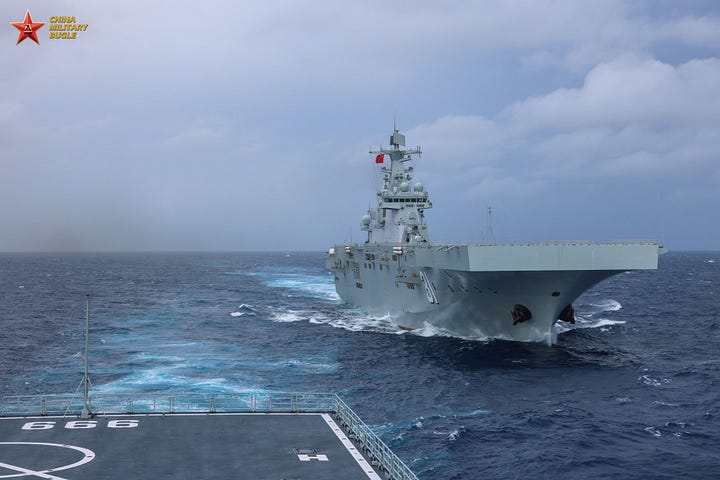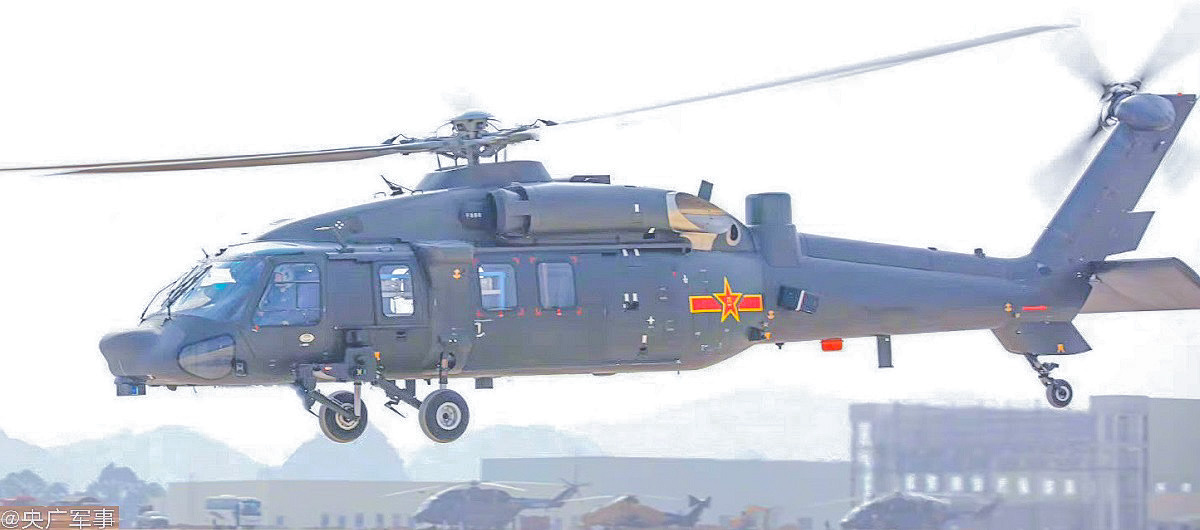One of the most peculiar aspects of China’s ongoing naval modernization and buildup concerns how China has built a sizeable fleet of large amphibious ships—no fewer than eight Type 071-class landing platform docks (LPDs), four Type 075-class landing helicopter docks (LHDs), and one Type 076-class landing helicopter dock/well-deck-equipped light aircraft carrier—without an adequate number of naval transport helicopter for use with such ships. Attesting to this is the rarity of images and videos of the PLAN’s large amphibious ships carrying any helicopters on their flight decks, let alone a flight deck full of helicopters.


While each of the Type 071-class LPDs can accommodate up to four helicopters in a large hangar, the larger Type 075-class LHDs and even larger Type 076-class LHDs/welldeck-equipped light aircraft carrier can each accommodate twenty to thirty helicopters on their flight decks and in their spacious hangars. The People’s Liberation Army Navy (PLAN)—which encompasses the subordinate recently expanded PLAN Marine Corps (PLANMC), which now has its own rotary aviation brigade—however, does not operate an adequate number of naval helicopters to fill all the hangars of the PLAN surface fleet—while also fulfilling shore-based roles, let alone fully load the PLAN’s thirteen large amphibious ships. Moreover, most of the helicopters operated by the PLAN are configured for anti-submarine warfare and/or are too small—in the case of Z-9 variants—to be practically employed as transport helicopters in an amphibious air assault operation.
The PLA does, of course, operate one of the world’s largest helicopter fleets, but most PLA helicopters are found in the PLA Ground Force’s (PLAGF) army aviation brigades. The vast majority of PLAGF helicopters are poorly suited for sustained operations over water, let alone operations from the flight deck of an LHD or storage inside a hangar, which requires the main rotors and the tail rotor to fold so as to reduce the footprint of the helicopter. Shipborne helicopters are marinized designs that are modified to be more resilient in the harsh maritime environment, often feature some type of flotation device and/or search and rescue apparatus such as a crash position indicator, and typically feature a reinforced rotor brake so that the spinning rotors—a major safety hazard—come to a halt earlier, thereby facilitating the relocation of the helicotper from the flight deck or landing pad inside a hangar. Hence, while PLAGF helicopters appear to be training over water with increasing regularity and are known to make use of both PLAN vessels and Chinese merchant ships taken up from trade as landing pads and refuelling and rearming points, these training activities are best viewed as preparations for a Taiwan invasion scenario in which the PLAGF attempts to land forces on Taiwan using its helicopters—almost certainly alongside a PLAGF-led amphibious landing attempt along Taiwan’s coastline. As a result, the PLAGF’s helicopters—and the PLA Air Force’s (PLAAF) helicopter fleet more generally—are no substitute for a suitably-sized fleet of PLAN and/or PLANMC maritime transport helicopters that can operate from China’s expanding fleet of large amphibious ships.
PLA Ground Force Helicopters Undertake Maritime Search and Rescue Training
Chinese state media has recently released videos documenting training events in which People’s Liberation Army Ground Force (PLAGF) helicopters undertake maritime search and rescue training. While minor events in the context of a massive military organization undergoing far-reaching modernization efforts, these training events amount to crucial steps in…
Although there is no reason to think that China will not, with time, rectify this glaring capability shortfall, observers should bear in mind that the first Type 071-class LPD was commissioned in 2007 and the first Type 075-class LHD was commissioned in 2021. China has had the better part of two decades to develop a suitably large fleet of naval transport helicopters, but Chinese decision-makers evidently elected to build no fewer than thirteen large amphibious ships before having a sufficient number of naval transport helicopters. There is a similar story to be told of how China built this fleet of large amphibious ships before having landing craft, including a fairly rudimentary landing craft utility (LCU) or landing craft mechanized (LCM), that could operate from the welldeck/welldock that is the hallmark of such large amphibious ship designs. Given this, observers would do well not to assume that China’s ongoing military modernization efforts follow some uber-rational master plan—the PLA is likely to encounter the same delays, trade-offs, and contingencies that affect military modernization efforts in other countries. If a major war, including a Taiwan conflict scenario, were to take place tomorrow, China’s thirteen large amphibious ships would be forced to go to war without enough naval transport helicopters to fill even half their flight decks and hangars.


